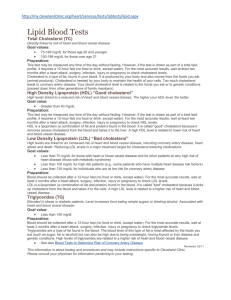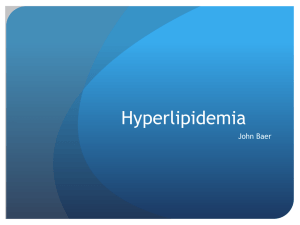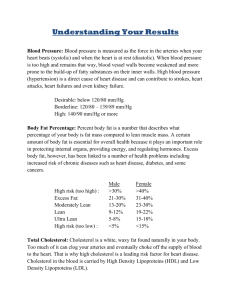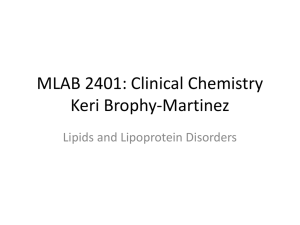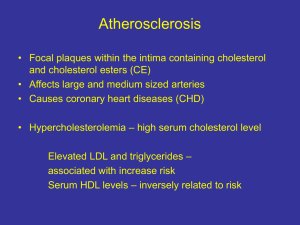Two types of Cholesterol Risk Factors Know your Numbers
advertisement
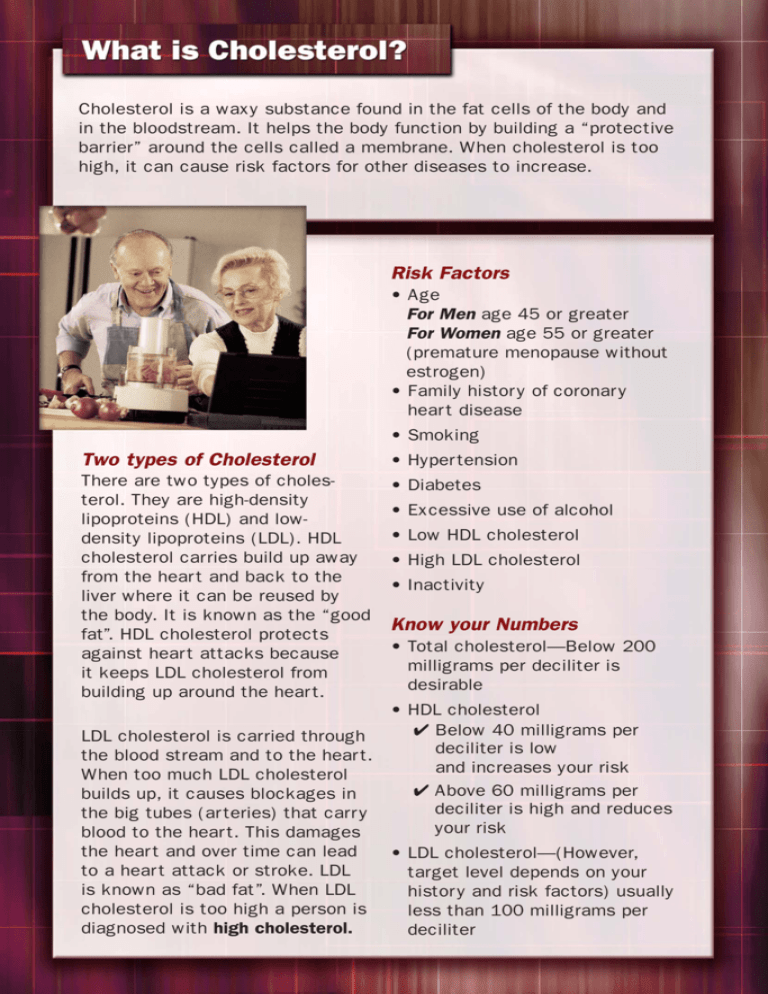
Cholesterol is a waxy substance found in the fat cells of the body and in the bloodstream. It helps the body function by building a “protective barrier” around the cells called a membrane. When cholesterol is too high, it can cause risk factors for other diseases to increase. Risk Factors • Age For Men age 45 or greater For Women age 55 or greater (premature menopause without estrogen) • Family history of coronary heart disease • Smoking Two types of Cholesterol • Hypertension There are two types of cholesterol. They are high-density lipoproteins (HDL) and lowdensity lipoproteins (LDL). HDL cholesterol carries build up away from the heart and back to the liver where it can be reused by the body. It is known as the “good fat”. HDL cholesterol protects against heart attacks because it keeps LDL cholesterol from building up around the heart. • Diabetes • Excessive use of alcohol • Low HDL cholesterol • High LDL cholesterol • Inactivity Know your Numbers • Total cholesterol—Below 200 milligrams per deciliter is desirable • HDL cholesterol 4 Below 40 milligrams per LDL cholesterol is carried through deciliter is low the blood stream and to the heart. and increases your risk When too much LDL cholesterol 4 Above 60 milligrams per builds up, it causes blockages in deciliter is high and reduces the big tubes (arteries) that carry your risk blood to the heart. This damages the heart and over time can lead • LDL cholesterol—(However, to a heart attack or stroke. LDL target level depends on your is known as “bad fat”. When LDL history and risk factors) usually cholesterol is too high a person is less than 100 milligrams per diagnosed with high cholesterol. deciliter






